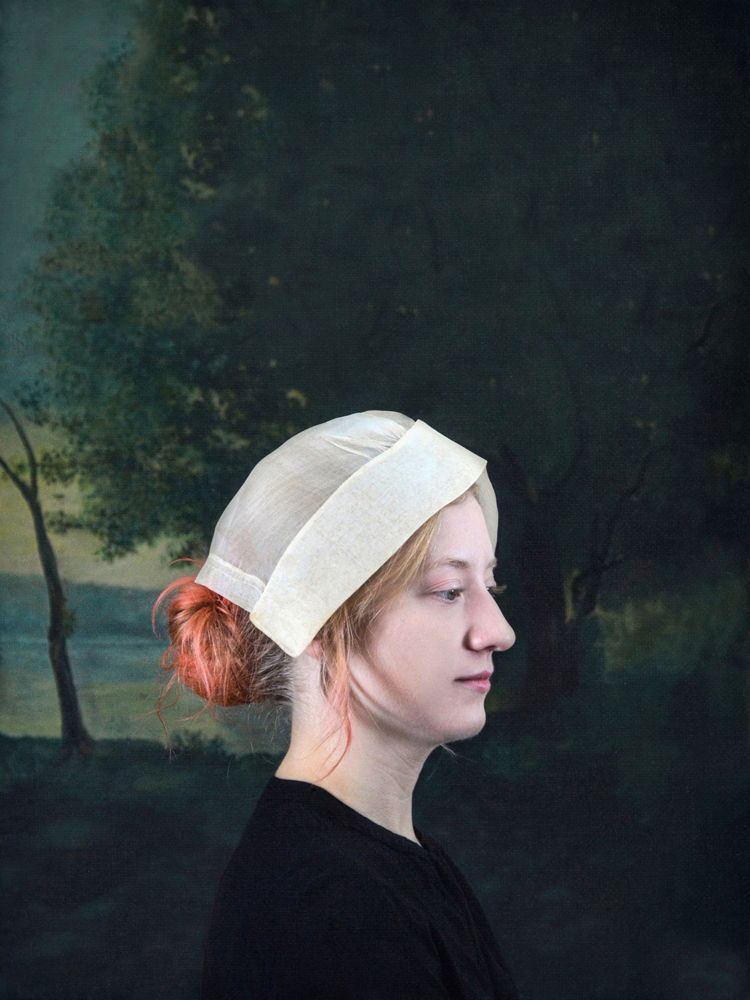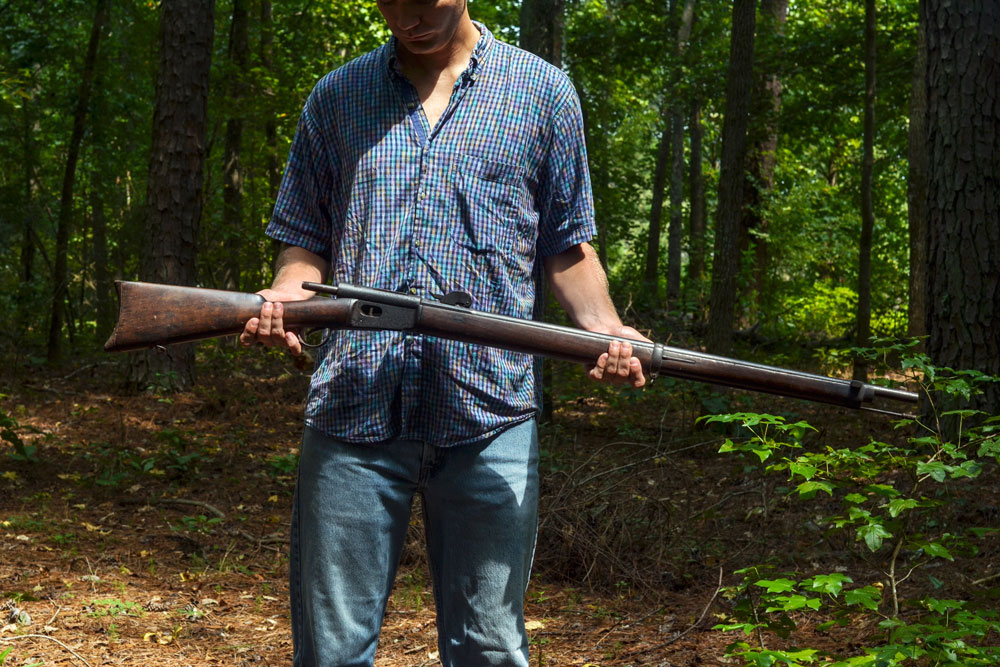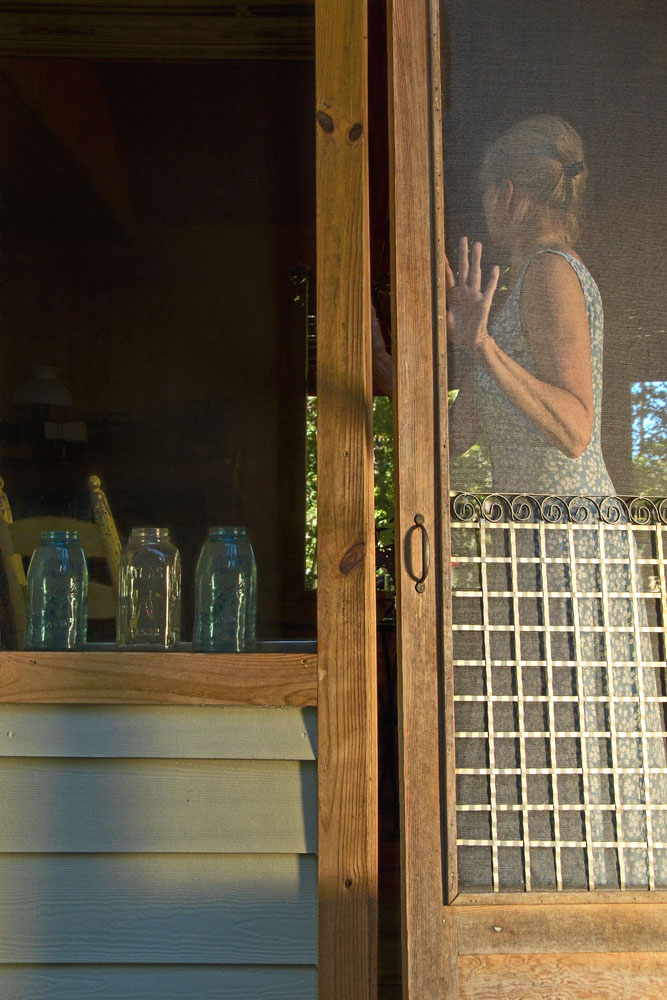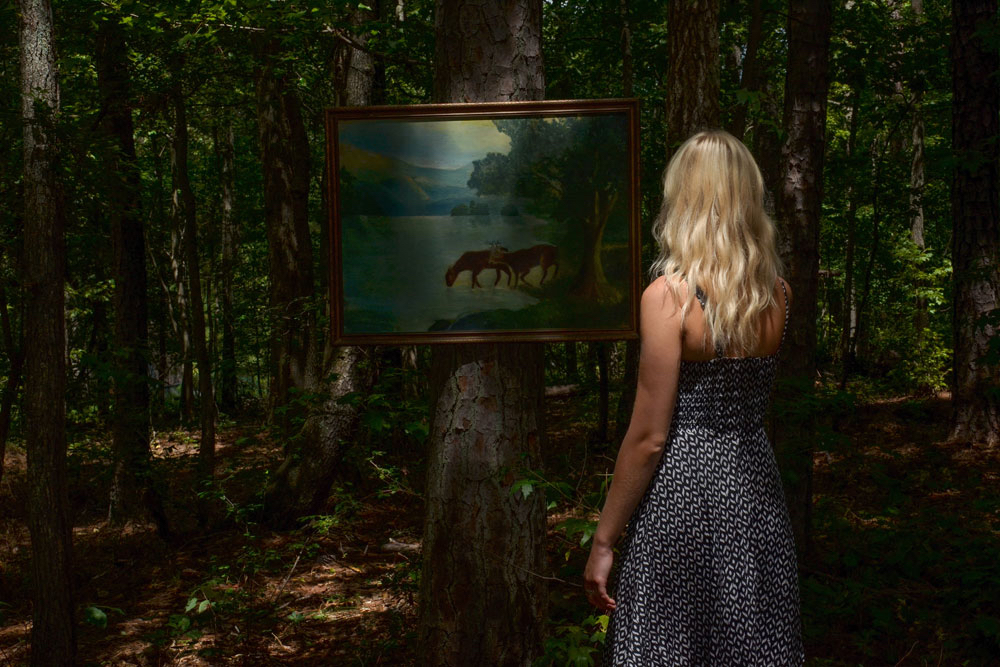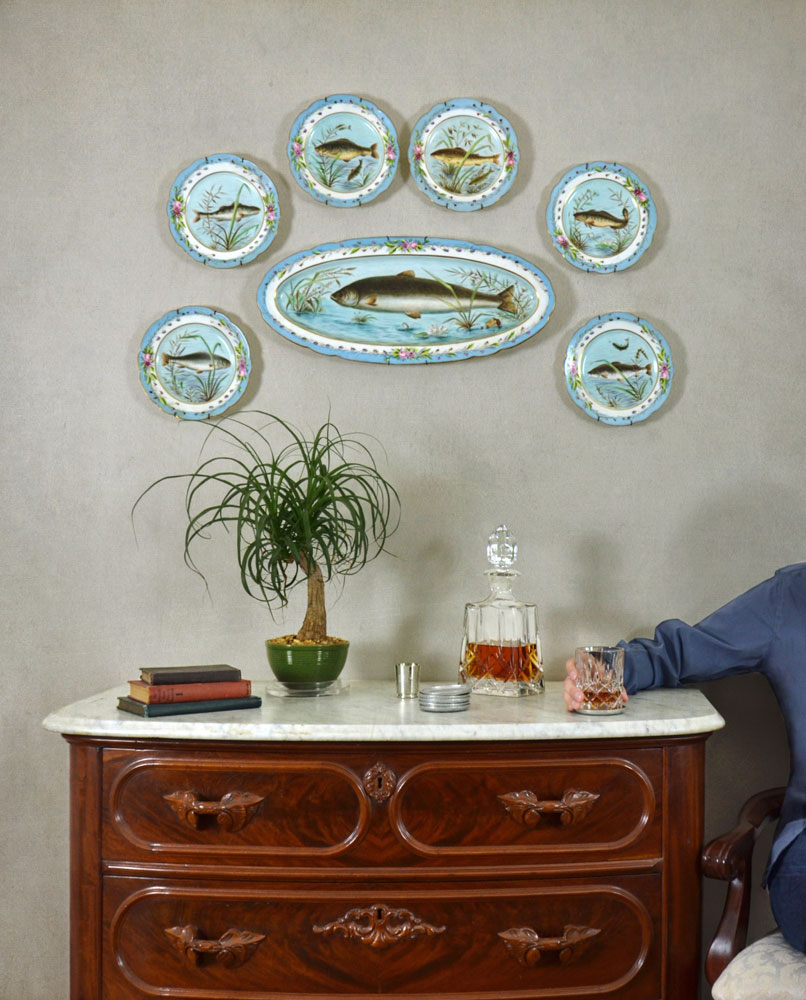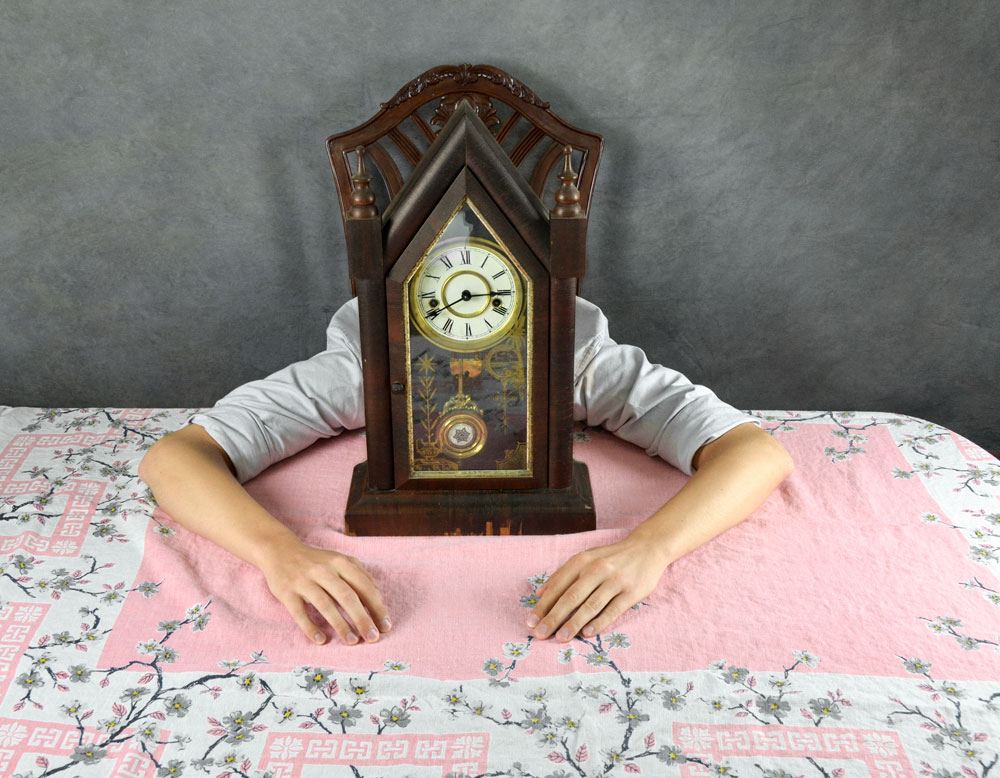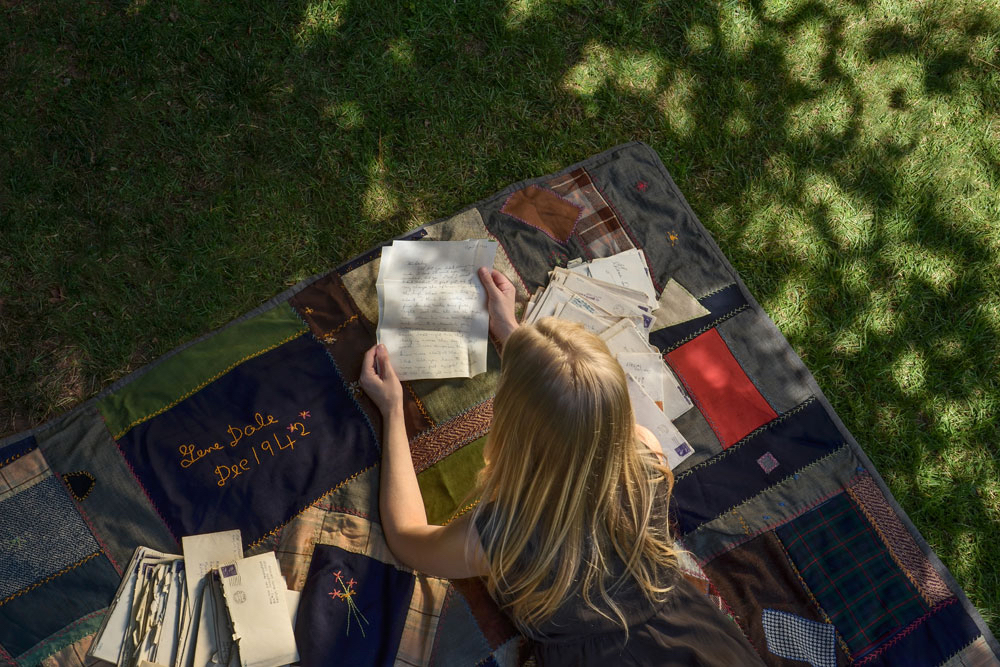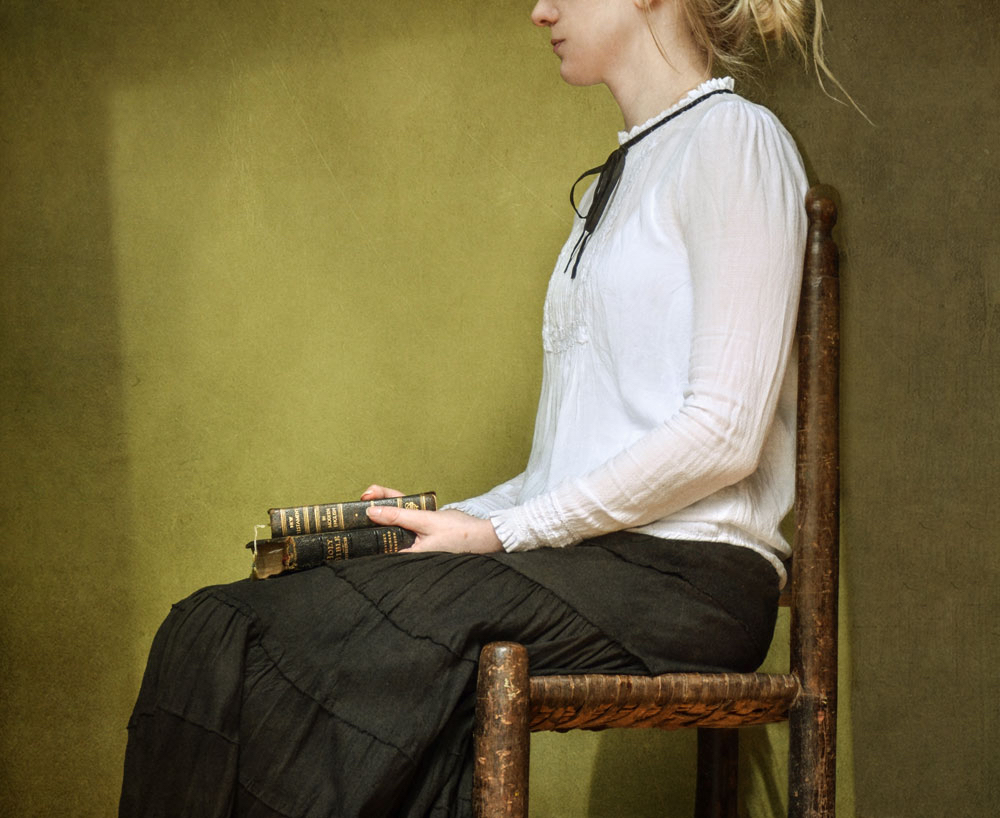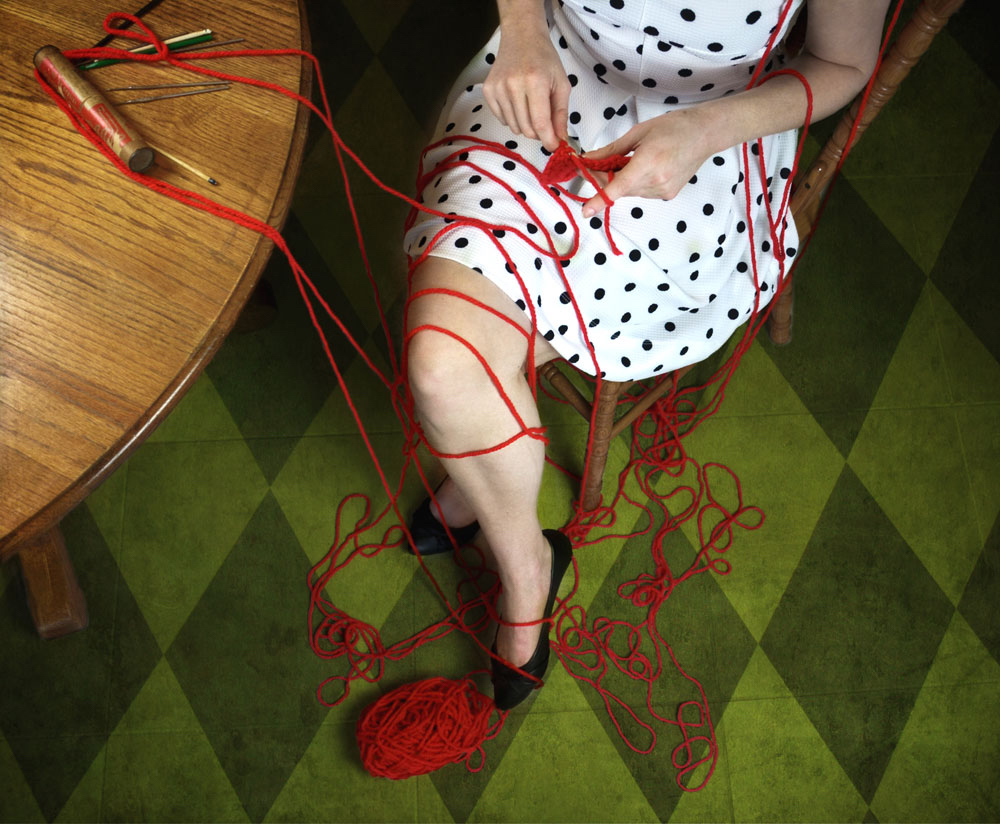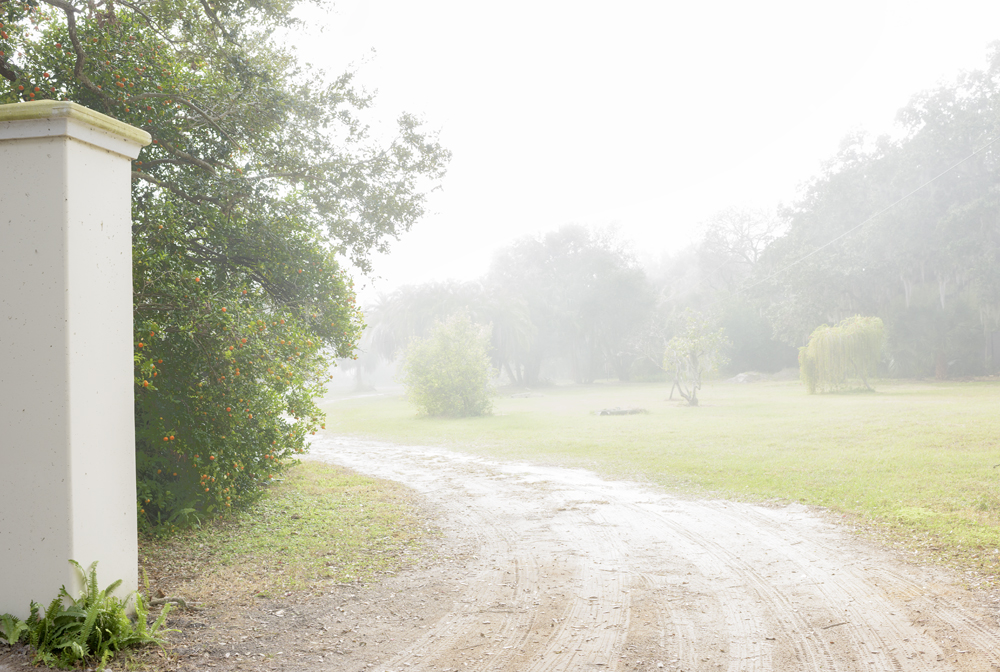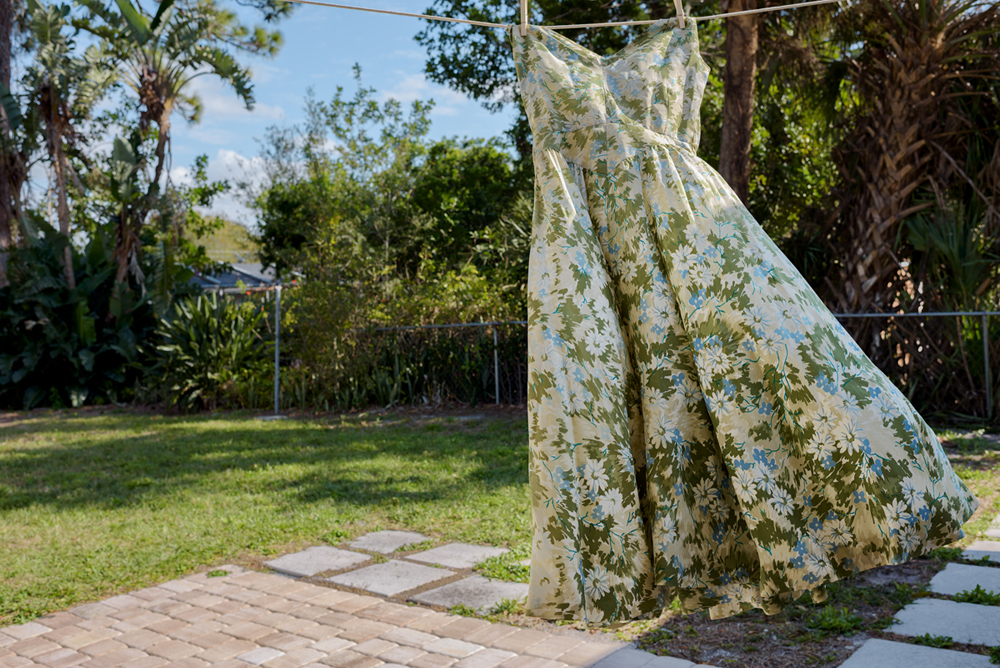Photographers on Photographers: Emily Hamilton Laux and Dale Niles
This month, we feature our annual August project, Photographers on Photographers, where visual artists interview colleagues they admire. Thank you to all who have participated for their time, energies and for efforts. Today we are happy to share this interview with Emily Hamilton Laux‘s interview with Dale Niles. – Aline Smithson and Brennan Booker
I met Dale Niles at a 2018 weekend workshop in Molena, Georgia, where we both had work on view in the SxSE Gallery. As Dale shared her work with the group, my first impression was of a smart and exceptionally hardworking artist. (Anyone who teaches herself the technical aspects of photomontage through “YouTube University,” and then proceeds to make award-winning photomontage work is truly dedicated to their work.) Later, as she recounted driving cross country in a converted school bus, I realized Dale also embodied that rare combination of a fun-loving adventurer who embraces family and home with her heart and soul.
While Dale doesn’t define herself as a Southern artist, she has lived in the deep South most of her life, and for me, her work is distinctly Southern. Her most recent work, Solidifying Roots, has allusions to the past are both overt and subtle, expressed with a rich and nuanced sense of color.
More than six years ago, Dale became the “trustee” of heirlooms and objects from her childhood home. In Solidifying Roots, she documents these family possessions, carefully staging each image with a conceptual approach. In most of the images, Dale pairs one of her adult children with an object to which they have a special connection.
Solidifying Roots addresses themes of family, loss, and heritage, tradition and legacy. Most of all, Solidifying Roots is about the tradition of story-telling, as each object is imbued with stories that are part of Dale’s family history. The project is also a serious, long-term commitment, requiring the kind of dedication that separates the artist from the dilettante.
Dale’s work on Solidifying Roots has paralleled another long-term project, What Lies Within: the Eclectic Collections of Andrea Noel. If I had to create a tagline Dale’s work, it would be “the power of traditional and contemporary story-telling.” Both these projects and Dale’s other work were part of a series of conversations Dale and I had in June.
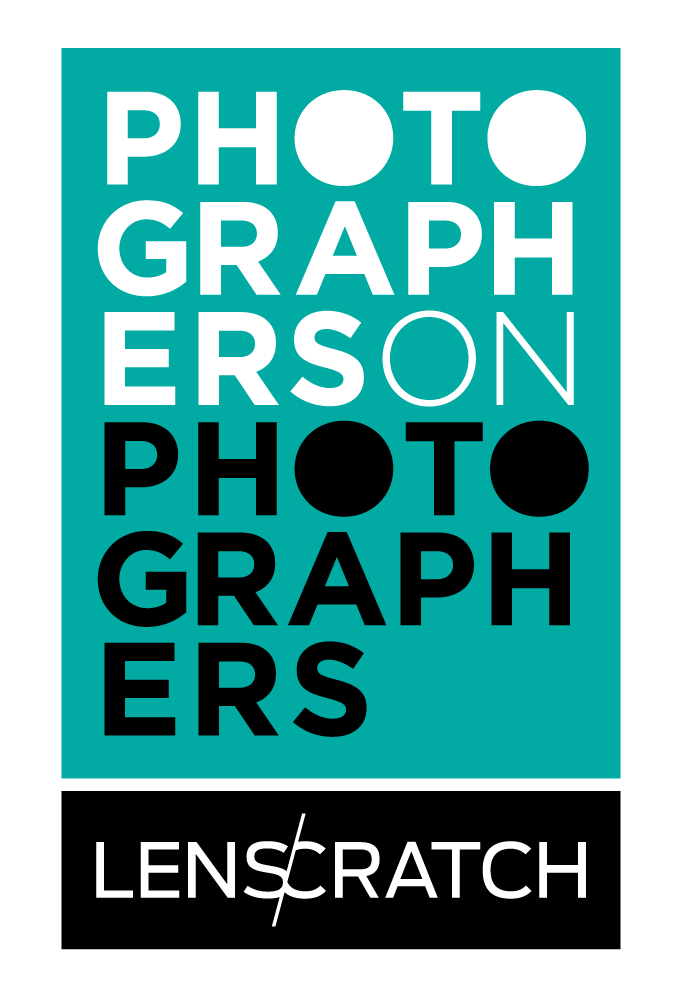 Dale Niles is a Georgia based artist who was born in Norfolk, Virginia. She is known for her diverse photographic interpretations from her black/white and color photographs to her montage storytelling collage photographs. She received her BA in sociology from Lenoir Rhyne College in Hickory, NC. Upon graduation she interned as a probation officer but realized this was not her calling. While doing several other vocations she continued her personnel interests which included painting, sculpting and photography, realizing that photography was her art of choice.
Dale Niles is a Georgia based artist who was born in Norfolk, Virginia. She is known for her diverse photographic interpretations from her black/white and color photographs to her montage storytelling collage photographs. She received her BA in sociology from Lenoir Rhyne College in Hickory, NC. Upon graduation she interned as a probation officer but realized this was not her calling. While doing several other vocations she continued her personnel interests which included painting, sculpting and photography, realizing that photography was her art of choice.
She has exhibited in shows across the United States as well as Canada and Venice, Italy. She has had solo shows in Rankin Gallery in Columbus, Ga; Lamar Art Gallery in Barnsville, GA; Horace Williams House in Chapel Hill, NC; Brickworks Gallery in Atlanta, GA; Arts Clayton in Jonesboro, GA; and currently has a show at the Cochran Gallery in LaGrange, GA. Her work is part of numerous personal collections as well as public collections at MOCA GA.
Her photographs have been featured in publications including Light and Shadow Magazine, SXSE Magazine, Shots, Lenscratch, The Hand Magazine and Oxford America.
In 2018, Dale’s work was selected for Critical Mass Top 200, 2018 ACP Ones To Watch, the Fence which was exhibited in 8 states across the United States as well as Calgary, Canada and the Virginia Twainam Smith Purchase award. She received the gold award in Moscow International awards; honorable mention in the family category of the International Photography Awards; first place in Santa Fe Photographers summer exhibition; honorable mention in the Nature category for International Photography awards; 7 honorable mentions in the Chromatic awards in 2017 and second place and an honorable mention in the Chromatic awards in 2018. She was part of a selected exhibit at the Atlanta International Airport 2018.
Solidifying Roots
The passing of a loved one is something everyone is faced with in their lifetime. Everyone handles this in their own way. While my mother was in hospice I sat with her as she told me family stories about my relatives, who was related to whom and stories that applied to each of them. Some of the people and stories I recognized, some I didn’t. They poured out of her with an urgency to share all that she knew about our family like a computer downloading all its information and I knew to be patient and listen carefully as this was information of my history.
This was ten years ago and shortly after my dad moved into a smaller place. In clearing out their home I inherited boxes and boxes of things that ranged from an as sundry of family pictures (spanning back to the 1800’s) to a wide variety of items that ranged from artwork to my grandmother’s cooking fork. These items have sat in my garage gathering dust and have filled the closets in my home. A bit overwhelmed with all I had accumulated I kept thinking, “What do I do with it all?”
Feeling the responsibility to preserve my family’s ancestry, I came up with the concept of photographing the old photos and items with the person to whom there was a familial connection. My four children were all named after a family member so it is also a means for me to tell them part of their ancestral story. Doing this connects our heritage, bridging the past with the present. It is an exploration through time. This is my way of confronting the loss of my parents and preserving our family history.
Emily Laux: What brought you to photography?
Dale Niles: My grandmother was a painter and my mother was very artistic. Growing up in this environment influenced me in the arts. I also painted. This morphed into working with and painting clay.
Also, I had an accident when I was younger that involved my left eye being cut. I was in the hospital for weeks with both of my eyes covered during my healing process. I remember my mom reading to me and telling me stories. Fortunately, I healed completely. It impacted my appreciation for sight and I felt the need to record things I saw. It was a factor that brought me to photography as it was easier to record more images this way than painting. But my painting has influenced me with the montages and texture photos.
EL: Hey, my grandmother was a painter too! Tell me more about your grandma who was a painter, and your own painting history.
DN: I love that my grandmother was artistic, but it is a little bit of a sad story. She was a manic depressive, and I think painting was an outlet for her. She was of the era of when people believed “shock treatments will cure this.” She went through all that. Her paintings are dark in color but not in subject matter. She painted swans and horses and deer, a lot of wildlife. And she also painted flowers on black velvet, it was a wide array.
I took a lot of art classes in college. Even though I came out with a sociology degree I loved the art classes. But I didn’t think art was something that I could live on. I painted as a hobby… and then I started having children. I also was photographing back then, but it also was more of a hobby. Once I started having children, I could not take enough pictures of them. When we moved to Georgia twenty years ago, I started taking my photography more seriously. Up until then I had a dark room, and then I switched to digital, and I had to relearn how to use the camera. I took a few classes. Then my teacher said “You’re good at this, why are you taking a class?”
She suggested I enter a show, and my picture won first place!
EL: Looking at your resume, that doesn’t surprise me at all. These days, what defines success for you?
DN: When someone has a connection to one of my images, that really gives me a feeling of accomplishment. It might be a totally different interpretation of what I felt when shooting, but that’s ok because I like that people have their own view. I like telling a story with my photography and how people see it is up to them. I love when someone tells me what they see or feel about an image.
I also love meeting other photographers through my journey. I have met so many who have become friends. I believe that the photographic community is the most giving community. Everyone is so willing to share and help. I realize that meeting other photographers might not define success but what I gain from these encounters is a bonus which feels successful.
EL: Dale, community is obviously important to you. Can you talk more about your photographic community, and also your involvement with Slow Exposures?
DN: I have only done a few of the smaller reviews. I’m in a critique group in Atlanta that meets once a month. They are great, because they are quite seasoned, and they don’t hesitate to tell me that I need to do something with a photo, or if something isn’t working. A critique group where everyone just praises the work is not very useful.
Also, I have one friend with whom I talk about my work. She lives close to me and we meet up, not on a regular basis but we do talk a lot on the phone. She is very generous, always available when I have a question; I hope I am giving back to her in the same way!
I am also excited about Slow Exposures (a photography festival that takes place in Zebulon, Georgia in late September). There are six of us having a show in a barn this year, and we are each doing something different this year; I might include some painted photographs this year. The work at Slow Exposures is supposed to have a Southern theme.
EL: Tell me more about Slow Exposures.
DN: Unlike other photography festivals, everyone is all in one place, and that creates a real sense of community. Slow Exposures is special that way. Everyone comments on the Southern hospitality. We always find private homes for the jurors and judges to stay. Slow Exposures has a wonderful family atmosphere.
When I first had work accepted at Slow Exposures I was so excited. I had four images accepted. Now I am on the executive board of Slow Exposures, and I am hoping to get more people from Atlanta to meander down to Slow Exposures, especially those attending Atlanta Celebrates Photography.
We have a theme of “What’s on Your Wall” because we want people to think about collecting, to move beyond just seeing an exhibition. We starting an ongoing conversation in the community about collecting, why people choose particular images to put on the wall.
EL: Dale, what makes you a “Southern” artist besides the obvious fact that have spent your life in the South?
DN: Well there is a sense of nostalgia in my themes. And there is a strong connection to the land. My grandfather had a farm, and my grandmother had a farm.
EL: They were married to each other and lived on different farms?
DN: Yes! He grew tobacco. And she grew soybeans on her farm. There were tenant farmers on both the farms. So my grandmother lived in town and my grandfather built a cabin on the farm property. The cabin is where loved to go as children most of the time, because we could just run wild in the fields. Being out in the country is important to me; I am rooted in the countryside.
I have gone back to my grandfather’s farm which is just outside of Raleigh. My mom had to sell it because we needed the money, which just tore her up. I went back with one of my third cousins. It has kind of gone to seed. The cabin is still there and there are these big millstones in it. The house still has all the bunk beds. We packed so many people in there and on the porch. A lot of good memories.
EL:What else has influenced the Southern voice in your work?
DN: Well my mother really emphasized family, even though she was an only child. She had cousins growing up that she was very close to. Even when my Mom was in hospice, she lay in her bed and kept telling me the names of relatives and how they were related to each other. For her, this was the most important thing to pass on to me: the family and its history. That is really what started Solidifying Roots for me. Not only am I preserving an object that meant something to our family but I share the stories with my children.
EL: I noticed that your earliest work is black and white. When and why did you make the switch to color?
DN: A lot of people ask me that! I had a series about my parents’ house that I did in black white, and that was very emotional for me because the house was torn down. My mom died, my dad had to be moved out. A lot of memories happened there. I had moved to that house when I was in the fourth grade and my dad was still in the house up until about six years ago. So the house was a part of me, and I felt that black and white would be good for that project.
The color happened when I started doing the Solidifying Roots project. It was a little bit like the Wizard of Oz!
Solidifying Roots and Andrea (What Lies Within: the Eclectic Collections of Andrea Noel) are neck and neck in terms of time frame. It is kind of great to be shooting two different things.
EL: Solidifying Roots is obviously very personal, and you’re the only one making the work. What’s it like to be working on a long-term collaboration with someone else?
DN: With Andrea and her collection, at the very beginning, she would lay things out. She has beautiful older home, wisteria on the front porch, it’s a dream cottage. Her floors were beautiful but … everything looked brown. The background was all brown.
I said, “We’re going to have to implement another color because everything is starting to look the same. So she started using tablecloths with some scenes.
I thought, “That’s better”…and then I said, “You know, I like it when you’re in the picture. ”At first she was reluctant….but now I have started including her in the images, although she doesn’t want her face or head in the image. The most I have gotten of her is in the tomato pincushion image.
EL: I am astonished at how many images you have created with your long-term project on Andrea’s collections
DN: That is just the tip of the iceberg. I don’t know how to edit it down. It will be a book eventually.
We’re probably going on our sixth year of collaboration, it’s been a long time. And she has become a friend. So now we have branched out from documenting the collections. For instance, we have traveled every back road in Pike County, Georgia. So those back road images I have had to put on the back burner for now…although I have used some of those images as backgrounds for my animal series.
Now I am starting to video because of some of the stories she has. And the Barbie dolls—well she sets them up and she dresses them up impeccably. They have matching shoes, accessories, she does their hair, and then she sets them up with a little story.
EL: I can see how challenging it could be to present these collections. Obviously, you want some consistency but I imagine each collection presents its own challenges…and yet it is a long-term project so it is bound to evolve.
DN: One time she said, “Let me tell you a story about these girls.” There is a pregnant Barbie standing there and there is a Barbie with a bit of a weird haircut and then there is Ken doll dressed as Prince Charming. One of them is having an affair with the pregnant Barbie’s husband, Prince Charming. She didn’t know that Prince Charming was married and she went to get her haircut, and it turned out the hairdresser was Pregnant Barbie, who gave her the strange haircut.
EL: What a soap opera! But fun to create the soap operas together.
DN: Andrea puts these stories together. She is a kick and she is so funny. When we created the reunion with the Ken dolls we just had so much fun setting it up. When we collaborate, it’s like going for a playdate.
Now Andrea is as close to me as a member of my family, and I eager to get working on the book with her. I am in the process of trying to edit down some of the images.
I’ve had several shows of her work. The first time she saw one of the images we had made of her collection, she as so surprised.
EL: Let’s talk a little more about Solidifying Roots. Staging images isn’t easy, it is an entire production process, one that starts with your imagination. How do you know when a staged creation has worked?
DN: I sometimes rely on serendipitous moments. While I am staging a shoot sometimes I do not know exactly what I am looking for. It is an over-the-top feeling when I capture something that is above my original expectations. I have to admit it does not always happen. Some images go on a back burner.
EL: The image “Aunt Willie’s Nursing Cap” has received a lot of attention.
DN: Yes that is the first image in Solidifying Roots where I showed a face, where it was leaning toward portraiture. I had debated doing that, but then that suit was one of those serendipitous moments. My daughter came home that weekend. She is a natural blond with beautiful hair, and she arrived home that weekend with the ends dyed pink. I thought, “What the heck? And then I thought how can I use this?” and then I thought okay we are going to make it onto a traditional Northern European portrait but with little pop of pink will make it contemporary and quirky…it wasn’t planned but it worked.”
EL:It certainly did! Finally Dale, tell me about your perfect day.
DN: I have a couple of perfects…..time with my family. If we’re at the beach that’s a bonus, and precious time to emerge myself in my art to create.
Emily Hamilton Laux is a visual artist who uses photography to examine ideas about the human relationship with internal and external environments. Her work addresses questions about biodiversity, identity and sense-of-place. Her most recent work Lychee Tree Sanctuary is a meditation on family and loss.
Born in Saigon, and raised in Cambodia, Paris and Washington, Laux has an MA from the American University School of International Service and a BA from Tulane University. Previously, Laux worked in publishing in New York, London and Hong Kong. In Connecticut, she worked as a photojournalist, gallery manager and arts publicist.
In 2019, Laux exhibited her work at the New Britain Museum of American Art, the Griffin Museum of Photography, the Beechwood Arts Salon, the Rhode Island Center for Photographic Arts, the Southeast Center for Photography and Terrain (Westport). Since 2017, her work has been shown at numerous galleries in the Northeast, including the Davis Orton Gallery, the Westport Arts Center, and the Ridgefield Artists Guild, among others. Laux maintains a studio at Firing Circuits Studios in Norwalk, and is member of the Westport Artists Collective and the Ridgefield Guild of Artists. She lives in Westport, CT.
Posts on Lenscratch may not be reproduced without the permission of the Lenscratch staff and the photographer.
Recommended
-
Salua Ares: Absense as FormNovember 29th, 2025
-
Ricardo Miguel Hernández: When the memory turns to dust and Beyond PainNovember 28th, 2025
-
Pamela Landau Connolly: Columbus DriveNovember 26th, 2025
-
KELIY ANDERSON-STALEY: Wilderness No longer at the Edge of ThingsNovember 19th, 2025
-
Jackie Mulder: Thought TrailsNovember 18th, 2025

